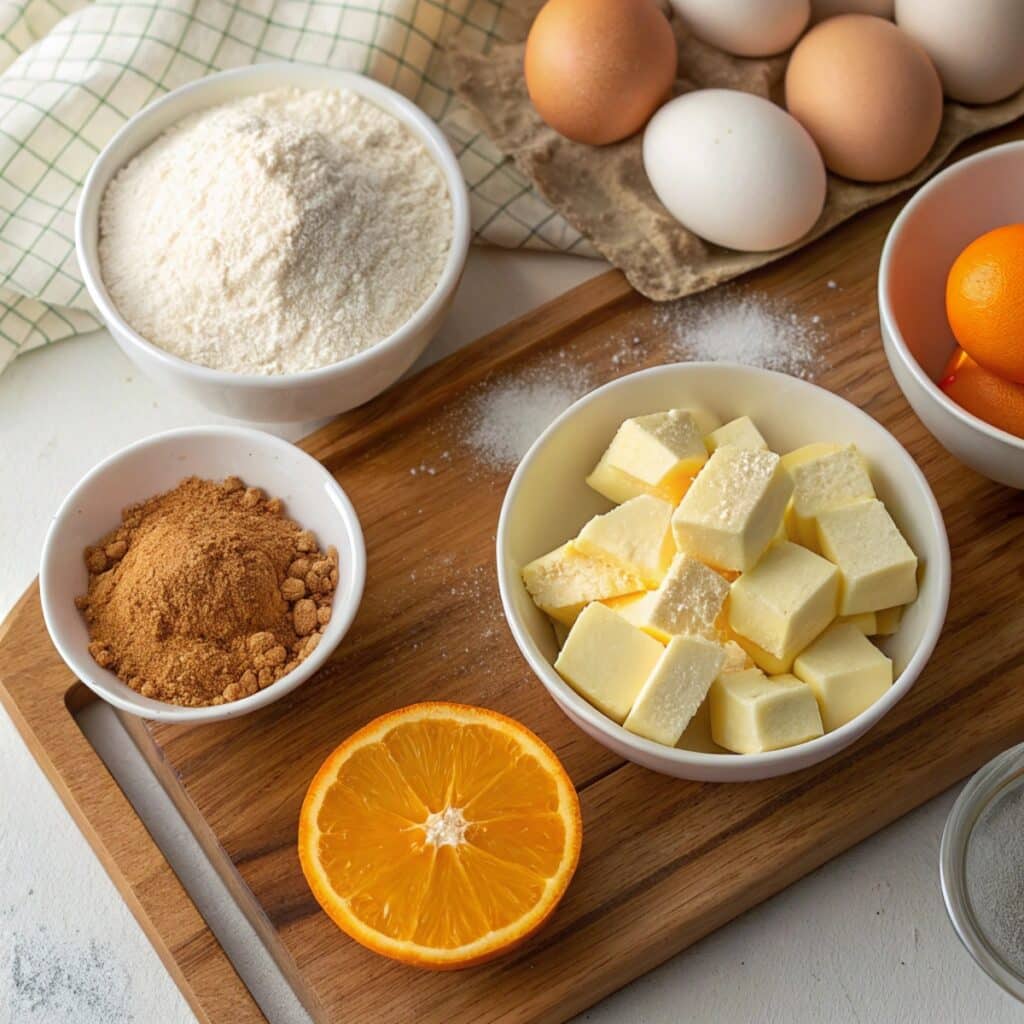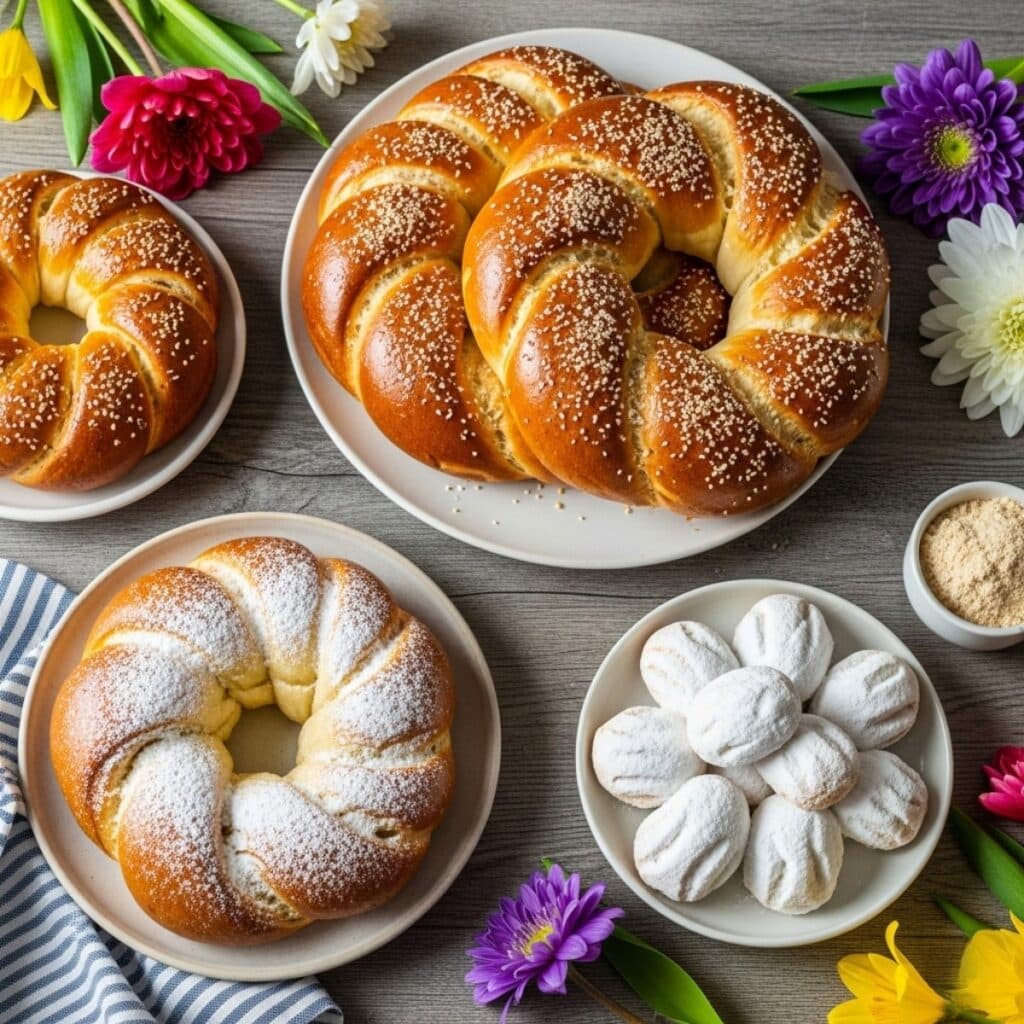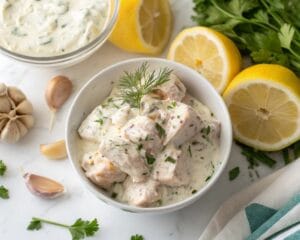Greek Easter desserts carry a special kind of magic that turns any holiday table into a warm celebration of family and tradition. If you’ve ever wondered what makes Greek Easter sweets so irresistible, you’re in the right place.
These desserts are more than just sugary treats—they’re stories, memories, and flavors passed down through generations, filled with love and the joy of gathering together. Whether you’re a seasoned home cook or just diving into Greek cuisine, mastering Greek Easter desserts will add that authentic touch to your holiday meals.
In this article, we’ll dive into the sweetest parts of Greek Easter, sharing classic recipes and tips that make these desserts approachable and delightful for any kitchen.
Print
Greek Easter Desserts
- Total Time: 1 hour 10 minutes
- Yield: 8 servings
Description
Greek Easter desserts carry a special kind of magic that turns any holiday table into a warm celebration of family and tradition. These sweets are stories, memories, and flavors passed down through generations, filled with love and joy.
Ingredients
- Fragrant spices like mahleb and mastic
- Citrus zest
- Butter
- Powdered sugar
- Almonds
- Red-dyed eggs (for decoration)
- Flour
- Yeast
- Sugar
- Milk
- Eggs
Instructions
- Mix warm milk, sugar, and yeast to activate dough.
- Add eggs, butter, mahleb spice, and knead into a rich dough.
- Let the dough rest and rise fully.
- Braid the dough and tuck red-dyed eggs before final rise.
- Bake the Tsoureki bread until fluffy and golden.
- For Kourabiedes, cream butter and powdered sugar.
- Fold in toasted almonds and vanilla.
- Shape dough into rounds or crescents.
- Bake until lightly golden.
- Dust heavily with powdered sugar once cooled.
- Serve with Greek coffee or tea for an authentic touch.
Notes
Be patient with dough rising to achieve light texture. Use authentic spices like mahleb and mastic for true flavor. These desserts are perfect for celebrating family traditions and creating lasting memories.
- Prep Time: 30 minutes
- Cook Time: 40 minutes
- Category: Dessert
- Method: Baking
- Cuisine: Greek
Nutrition
- Serving Size: 1 piece
- Calories: 250
- Sugar: 15g
- Sodium: 100mg
- Fat: 10g
- Saturated Fat: 5g
- Unsaturated Fat: 4g
- Trans Fat: 0g
- Carbohydrates: 30g
- Fiber: 1g
- Protein: 3g
- Cholesterol: 35mg
Table of Contents
Discovering Greek Easter Desserts: A Delicious Tradition
What Makes Greek Easter Desserts Unique?
Greek Easter desserts are rooted deeply in history and culture, blending simple ingredients with meaningful symbolism. Unlike everyday sweets, these desserts often use fragrant spices like mahleb (a cherry seed spice) and mastic, along with citrus zest, which give them their unmistakable aroma. Many are braided or shaped in ways that symbolize rebirth and renewal — perfect for the Easter celebration.
The Role of Sweets in Greek Easter Celebrations
In Greece, Easter stands as the largest holiday of the year, with desserts taking center stage in the festivities. After the long Lenten fast, families gather to enjoy rich, sweet treats that mark the joyous end of the season.
From the traditional Tsoureki bread to buttery Kourabiedes cookies dusted with powdered sugar, each dessert carries a story of celebration, family bonding, and a touch of indulgence after weeks of restraint.
The Most Famous Greek Easter Desserts to Try at Home
Popular Greek Easter Desserts Overview
When it comes to Greek Easter desserts, a few classics stand out as must-tries. These treats are beloved not only in Greece but by food lovers worldwide.
Among the favorites are Tsoureki, a sweet, braided bread often flavored with mahleb and decorated with red-dyed eggs, symbolizing resurrection. Then there are Kourabiedes, the crumbly almond shortbread cookies dusted generously with powdered sugar, perfect for nibbling alongside coffee or tea.
Spotlight on Iconic Treats Like Tsoureki and Kourabiedes
Tsoureki is more than just bread — it’s a centerpiece of the Greek Easter table. Learning to bake this traditional sweet bread brings a piece of Greek heritage right to your kitchen. If you are keen to explore variations or related sweet breads, you might enjoy checking out the Greek Desserts Recipes page for more ideas.
Kourabiedes, with their melt-in-your-mouth texture, are often served at celebrations and weddings as well. For a deeper dive into these cookies and other buttery treats, look at Traditional Greek Dessert Recipes, where you’ll find tips and recipes perfect for any occasion.
How to Make Classic Greek Easter Desserts Easily
Step-by-Step for Tsoureki
Baking Tsoureki may sound intimidating, but with a few simple steps, you’ll have that iconic, fluffy, fragrant bread ready to impress. Start by mixing warm milk, sugar, and yeast to activate the dough. Then add eggs, butter, and that signature mahleb spice to create a rich dough.
Once kneaded and rested, braid the dough and tuck in those vibrant red eggs before the final rise and bake. If you want a detailed recipe, you can also explore Greek Easter Desserts for variations and tips.
Easy Kourabiedes Recipe for Beginners

Kourabiedes are straightforward to make and require only a handful of ingredients: butter, powdered sugar, almonds, and vanilla. Cream the butter and sugar, fold in toasted almonds, shape the dough into small rounds or crescents, bake until just golden, then dust heavily with powdered sugar. These cookies are perfect for baking with kids or as a quick, crowd-pleasing treat.
Tips for Baking Perfect Greek Easter Sweets
In Greek baking, patience is crucial. Make sure to let doughs rise fully for a light texture, and don’t skimp on the spices—mahleb and mastic are your secret weapons for authentic flavor. For more baking tips and recipes, you can visit Traditional Greek Dessert Recipes, where I share insights from my kitchen.
What Do Greeks Eat at Easter? Traditional Dishes Beyond Desserts
A brief overview of savory dishes served along with desserts
Greek Easter isn’t just about sweets—it’s a full celebration with hearty savory dishes that complement those desserts perfectly. The centerpiece is often lamb, slow-roasted on a spit or in the oven, symbolizing sacrifice and renewal. Other favorites include magiritsa, a rich Easter soup made from lamb offal and herbs, enjoyed right after the midnight church service to break the fast.
How These Dishes Complement the Sweet Treats

After indulging in savory delights, the rich, spiced sweets like Tsoureki and Kourabiedes provide a perfect balance to the meal. The sweetness offers a joyful contrast to the savory flavors, creating a memorable dining experience. For a complete Greek Easter experience, consider pairing these dishes with classic desserts you can find at Greek Easter Desserts and check out other Greek recipes on Greek Dessert Variations to add some variety.
Planning Your Greek Easter Lunch Dessert Pairings and More
Ideas for Pairing Desserts with Easter Meals

Creating a memorable Greek Easter lunch means balancing flavors and textures. After serving savory dishes like roasted lamb or magiritsa soup, offering a selection of Greek Easter desserts brings the perfect sweet finish. Try pairing the fragrant Tsoureki bread with a light drizzle of honey or alongside a cup of Greek coffee for an authentic touch. Kourabiedes cookies, with their buttery crumb, are excellent when enjoyed with tea or even dessert wine to round out the meal.
Here are some suggestions for creating a balanced Greek Easter lunch menu.
To plan a satisfying and festive lunch, start with traditional appetizers like tzatziki and Greek salad, followed by a main course of slow-roasted lamb or grilled veggies. Finish strong with your dessert choices from the Greek Dessert Recipes collection. This combination honors Greek tradition while keeping your meal approachable and delicious for everyone at the table. Explore a vibrant collection of Greek recipes perfect for Orthodox Easter, featuring George Calombaris’ best traditional dishes.
Part 6: Greek Easter Dessert FAQs — Your Top Questions Answered
What is a famous Greek dessert?
One of the most famous Greek desserts is Tsoureki, a sweet, braided bread traditionally served during Easter. Its unique flavor comes from spices like mahleb and mastic, and it’s often decorated with red-dyed eggs symbolizing resurrection. Other popular treats include baklava and Kourabiedes, which are almond shortbread cookies dusted with powdered sugar.
What are the most popular desserts in Greece?
Besides Tsoureki and Kourabiedes, Greek favorites include galaktoboureko, a creamy custard wrapped in crispy phyllo dough, and kataifi, shredded phyllo filled with nuts and soaked in syrup. Many of these desserts feature nuts, honey, and fragrant spices, highlighting Greece’s rich culinary heritage.
What Greek dishes are there?
Greek cuisine offers a wide range of dishes, from fresh salads like Greek salad (horiatiki) to savory mains like moussaka and souvlaki. During Easter, traditional dishes include roasted lamb, magiritsa soup, and spanakopita (spinach pie), all of which complement the festive sweets.
What do Greeks eat at Easter?
Greek Easter meals are a feast of symbolism and flavor. After a fasting period, families break the fast with magiritsa soup and celebrate with roasted lamb, fresh vegetables, and a spread of desserts like Tsoureki and Kourabiedes. The meal is a joyful gathering marked by food, family, and tradition.
What dishes should be prepared for Greek Easter lunch?
For a classic Greek Easter lunch, serve slow-roasted lamb, complemented by side dishes such as roasted potatoes, Greek salad, and spanakopita. Finish the meal with traditional desserts like Tsoureki and Kourabiedes from the Greek Easter Desserts collection to keep the celebration sweet and authentic.
Conclusion
Greek Easter desserts bring a special combination of flavor, history, and heartfelt tradition to any holiday gathering. From the fragrant, braided Tsoureki to the melt-in-your-mouth Kourabiedes, these sweets offer more than just taste—they tell a story of family, culture, and celebration. As a chef who’s traveled the world and cooked in countless kitchens, I’ve found that nothing connects people quite like sharing food that’s made with love and care.
I hope this guide inspires you to bring a touch of Greek Easter magic into your kitchen. Whether you’re baking Tsoureki for the first time or serving up a platter of traditional cookies, remember: the best part of any recipe is the memories you create around the table.
For more delicious recipes and kitchen tips, explore the full range of Greek desserts and beyond at recipeyz. Let’s make your Easter celebration unforgettable, one sweet bite at a time.





1 thought on “Greek Easter Desserts: Sweet Traditions and Simple Recipes for Your Holiday Table”
Comments are closed.